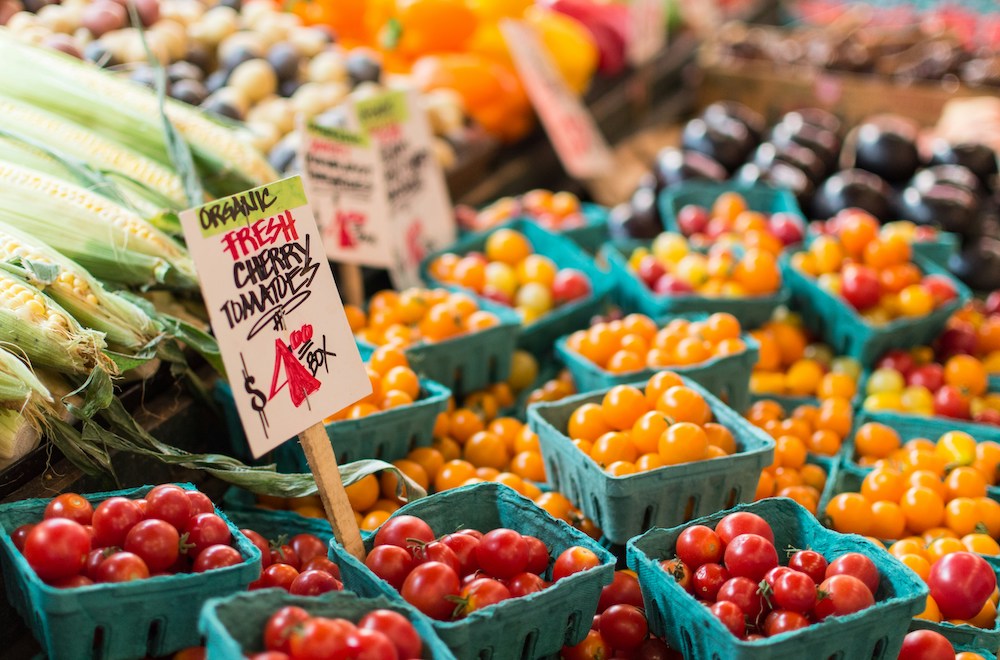Farmer’s markets have become increasingly popular in recent years, and they’re a great way to test a new product and gather customer feedback. On the downside, it can be difficult to turn a profit at a farmer’s market, and selling at one typically involves a lot of work. Below are some tips and strategies that can help you sell at a farmer’s market and make a profit!
(Note: we’re working on the assumption that you’ve already decided what to sell, and have set up a business plan. If you haven’t, be sure to check out our blogs before heading back here.)
Step 1: Go downtown
Or uptown, or midtown…wherever you can find a popular farmers market near you. Once you’re there, scout around with the mindset of a vendor. What do the displays look like? What are vendors charging for their wares? Are there four different blueberry vendors, but no raspberry vendors? The inspiration and information you draw here is essential to making your booth flourish. If you notice other vendors who sell the same thing you do, that doesn’t mean you can’t still make sales, but you should take some time to articulate what sets you apart.
Step 2: Do your paperwork
This is the most boring part of the process, but also the most critical. If you can’t secure a spot, you’re not selling, no matter how tasty your homemade jam might be. Therefore, do a little research and find out exactly which permits and licenses your market of choice requires. All of the information you need should be spelled out clearly on the market’s website. Typically, you will be required to submit an application and application fee. Most markets will also want you to have a Tax ID number, to assure themselves that you are a legitimate business. If you are selling prepared or processed food, you may also need to prove that you have passed a safety inspection.
Step 3: Plan your booth setup
Finally, the fun part! Now that you’ve got all your paperwork squared away, it’s time to plan how you will display your wares. Depending on what your market provides, you might have to acquire a table, tent, and chairs; you’ll also probably need a tablecloth that matches the season (winter holidays, fall, spring/summer). Most farmer’s market vendors choose to display their wares in colorful baskets or on elegant plates. Browse around the internet, and you’ll be sure to find some inspiration. Just be careful not to spend too much on your display—you are trying to turn a profit, here.
Step 4: Consider the logistics
Specifically, the logistics of how you will transport your products to and from the market safely. Many farmers selling produce opt for an open-bed pickup truck, but this can leave the produce exposed to rain, dust from the road, and insects. You might be better off investing in an air-conditioned van. Also, speaking of the weather, take a moment to consider what elements might affect you on market day. If you’re going to be under a freestanding tent, you might be rained on; blown about by the wind; nipped by freezing temps; or melting in the summer heat. A portable, battery-powered fan or heater can help with the latter two, and you can also purchase tent weights to keep everything on the ground.
Step 5: Build relationships
On market day, don’t forget about what you’re there to do. Obviously, you’re there to make sales, but you will also benefit greatly by forming relationships with your fellow vendors and potential customers. Even though you are technically in competition with other vendors, you can also help one another succeed in your local marketplace. Other vendors are most likely to hear about new market opportunities, or have a non-refundable booth reservation they’d like to resell, so be courteous and friendly with them.
Interacting with local passerby is also a must, both for making sales on market day, and building your brand reputation in the area. People who come to the farmer’s market every day might not currently want to try your homemade pickles, but sooner or later they might have a need for them, and having a few friendly chats with them can only help. You will probably have many people come up to your booth, try a sample, and leave without making a sale, but if you give them a pleasant experience, you have not wasted your time—you are investing in your future sales at the next market.
Step 6: Keep building your brand
Once the market is over, keep working to build your brand and reputation as a local seller. You might consider collecting customer emails so you can send out a weekly update about the products you will have in stock; building up your social media accounts; and invest in branded banners, T-shirts, and signage you can display at the next market. Remember that most people who shop at farmer’s markets are looking for a connection to the people that make their food. Figuring out a way to tell and share your story is essential to growing your business.
Trying to sell at a farmer’s market? Call SSI Packaging!
If you’re just learning how to sell at a farmer’s market, you’re probably not ready to package and distribute your product to the masses just yet—but SSI Packaging will be ready for you when you are. We offer everything a small business owner might need to label, mark, pack, and sell their homemade product, from industrial laser printers to bubble wrap. To learn more about our Richmond VA packaging products, click here.

